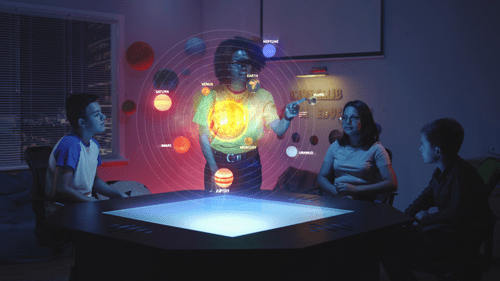It has been almost 50 years since Hungarian-British physicist Dennis Gabor won the Nobel Prize for his invention of the hologram, yet despite the promises of science fiction, 2020 has a distinct lack of holograms all around us.
Technology for creating and projecting holograms might not be at the Star Trek level of recreating entire rooms, but it has been ready for a while. Almost a decade ago, researchers at MIT demonstrated that holographic television could be a reality using common off-the-shelf electronics. They used Microsoft’s Xbox Kinect camera to produce a 15-frame-per-second holographic video transmission.
Using diffraction, it's possible to record and reproduce a 3D image that has depth, parallax, and many other properties of the original object. To produce a hologram, it requires knowing how light, most often laser beams, bounce around an object and to combine the recording with the original beams. The final result is a virtual image you can view from multiple angles.
Already, holographic screens have been used for advertisements and long-distance communication. A famous example was Prince Charles speaking at the World Future Energy Summit in Abu Dhabi via hologram.
During the 2010s, holograms have been used in virtual lectures, but some of the most well-known examples are in music. In a controversial move, both Michael Jackson and Tupac Shakur had their likeness reconstructed for a virtual performance after they died. Talking about bringing the dead back to “life”, reality TV personality Kim Kardashian was recently gifted a hologram of her later father for her 40th birthday.
Many online ridiculed such a gift, but her influence on social media is significant, so holograms might start to pop-up in more places. The patent for the technology that created the Tupac hologram was bought by entrepreneur David Nussbaum, who founded PORTL hologram. The tech was used to project Wikileaks founder Julian Assange out of the Ecuadorian embassy he stayed in for years.
The approach from PORTL is a holographic screen the size of a telephone box that can create a holographic image using a regular camera with a white background. This screen costs $60,000, so it is not yet ready for mass distribution but it has potential.
Researchers have also brainstormed a new type of thin display for holograms recently. Rather than bulky cases, this one is much slimmer at less than 10 centimeters (3.9 inches). It is certainly not portable yet, but it is a step forward for the technology.
In a year where a deadly pandemic forced us to move meetings and conferences to the virtual world, holograms may be the next big step to make these kinds of communications even more interactive.
[H/T: TechCrunch]




